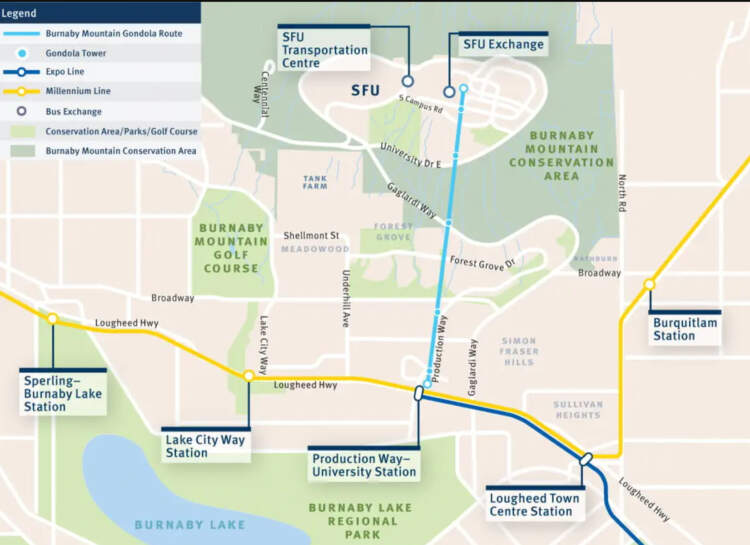Building a Laneway Home in Burnaby: A Step-by-Step Guide
Comprehensive Guide to Constructing a Laneway Home in Burnaby
Source: City of Burnaby
Laneway homes, smaller residential structures situated in the rear of a main house and facing a lane or road, have gained popularity in Burnaby. They offer extra living space for families or serve as valuable rental properties, generating income for homeowners.
As of September 18, 2023, Burnaby has authorized the construction of laneway homes. If you’re contemplating the construction of a laneway home, it’s essential to acquaint yourself with the following information before commencing your project:
Steps to building a laneway home
Prior to starting, it’s essential to grasp the procedure, steps, necessary application requirements, as well as the mandatory approvals and inspections throughout the process.
The following guidelines cover the construction of:
1. A laneway home and a new single-family home
2. A laneway home within the existing yard of a single-family home
Step 1: Preparing to apply
Understanding your property’s distinct features, such as its zoning regulations and any relevant conditions, will provide valuable insights to aid in your project planning.
Use BurnabyMap to confirm your property’s zoning and what rules apply
- Select the magnifying glass icon and enter your property’s address in the search field on the right.
- The property’s current characteristics, including zoning, are highlighted.
- Select the zone for details of what rules apply, including: minimum lot dimensions, lot area and coverage, height, depth and placement of buildings on the property.
Make sure that your property is eligible for a laneway home
To add a laneway home, a property must meet all of the supplementary regulations outlined in Burnaby’s Section 6 Supplementary Regulations and the parking regulations specified in Schedule VIII – Off-Street Parking. Key considerations include that the property must:
- Be zoned to allow laneway homes.
- Have a principal house that is a single-family home which may include a secondary suite. The house must not a duplex, semi-detached home or other form of development.
- Be sited appropriately with:
- a lane with vehicular access or
- a corner with vehicular access from the street abutting the side lot line or
- a through lot ( a lot with a road at the front and back)
- Have sufficient room for:
- Fire access corridor on one side of the property that connects the laneway house to the nearest street. This 0.9m pathway must be clear to the sky, free of any projections or obstructions.
- One outdoor or carport parking space
Be aware of any constraints or encumbrances that apply to your property
- easements or rights-of-way where someone else has a right to cross or use your land for a specific purpose
- information can be obtained through The Land Title and Survey Authority of British Columbia (LTSA)
- environmental constraints such as setbacks for Streamside Protection and Enhancement Areas (SPEAs)
- heritage status as flagged within BurnabyMap
- proximity to a registered archeological site with requirements under the Province of BC’s Heritage Conservation Act
- presence of an underground storage tank onsite that requires removal
Please note: If you are removing an existing garage or other structure to make room for a laneway home, you will also need to apply for a demolition permit which incudes a waste diversion plan.
Step 2: Planning your project and getting pre-approvals
Good planning will ensure your project moves through the review process smoothly and quickly, without any serious conflicts with bylaws and regulations. Define your allowable development permit area per the zoning bylaw and any constraints noted in Step 1, by first locating your property lines. Additionally, review the laneway how to guide below for details to inform your site layout.
We recommend that you engage a qualified design professional to navigate the process as designing a new house can be complicated. Certain property attributes and regulations can add complexity to the design process, and site specific issues may require alternate process to resolve.
Engineering pre-application approvals
You must obtain Engineering pre-application approval before you may submit a building application.
A completed Engineering Pre-Application package consists of:
- Fee payment
*Please note: the details of what is required for both the topographical survey and the proposed driveway location drawing are included in the hyperlinks above. As these are different from what the Building Department has previously required, please carefully review prior to submission.
You can apply for your Engineering pre-application online and submit all required documents by logging into My Permits Portal. Make sure that your application is complete as this ensures your application will be accepted and processed quickly.
When your application is taken in, Engineering staff will review your submission to ensure that it meets the requirements. Once confirmed, an invoice will be emailed to you with the application fee.
An Engineering Project Manager will begin reviewing your application and will contact you once the fee has been paid. As part of that review, they will provide you with information related to any additional reviews or considerations that will need to be included in your Building Permit Application.
When the Engineering review is complete, you will be issued the Engineering Pre-Application Review Report that will be part of your complete Building Permit Application package. Missing this document will deem your building application incomplete.
BC Hydro electrical servicing and utility connections
Prior to submitting a Building Permit Application to build a laneway home, you must contact BC Hydro directly to obtain advice on electrical servicing. A confirmation email from BC Hydro will be required as part of your Building Permit application so it is recommended that you contact them early in the process.
It is recommended that you contact other third party utilities (such as Fortis, Telus or Shaw) directly for advice on locating these servicing connections.
Prepare your Building Permit Application
The information from the Engineering Pre-Approval Report as well as BC Hydro will inform your building design. When you are ready to submit the Building Permit Application, ensure that you are not missing any documents listed in the Intake Checklist. Incomplete packages will not be accepted, and missing information will impact the review and approval process.
Refer to the Laneway Homes Site servicing sketch below:
Step 3: Apply for your permits
Submit a completed Building Permit Application
Consult the Intake Checklist For All Single and Two Family Dwelling Permits below to find out what drawings, forms, and documents you need to submit a complete application.
If you are building a new single-family home and a laneway home, you can apply online and submit all required documents by logging into My Permits Portal:
Please note: if you have already submitted a building permit application, and/or are in the middle of building a single-family home and would now like to add a laneway home, please contact the Building Department.
If you are building a laneway home on an already existing single-family dwelling, please submit the completed Single and Two Family Dwelling Application Package in person at the Building Department front counter (2nd floor of City Hall). Online applications will be available in the future.
A completed application includes:
-
- *required for all demolition permits
- Engineering pre-application report
- BC Hydro confirmation email
How to pay
Full payment of fees must be made at the time of application. Fees can be paid directly in My Permits Portal, or you can pay invoices online with your credit card (Visa, MasterCard, American Express) or in-person with cash, cheque or debit card. Per the City’s Fee Recovery Bylaw 13640, we’ll charge a fee of 1.75% on payments made with a credit card.
Application Review
City staff teams will review all complete development applications and building plans and will:
- provide you with a list of any deficiencies, conditions and items to be addressed before a permit can be issued
- advise you of any payments related to damage deposit and engineering servicing fees
Permits will only be issued when all necessary requirements from the City have been met, and all fees have been paid.
Permit Approval
When your building permit is ready to be issued, staff will notify you by email with instructions to pick up, download and print your permit(s) and approved drawings.
Please note: 1 paper set of City-approved drawings (full-sized and to scale), displaying the City accepted stamp, needs to be made available for viewing at the jobsite for City inspectors. If the City accepted stamp is missing, or the paper set isn’t at the jobsite, you will be required to reschedule your inspection and may be subject to a re-inspection fee.
Changes or revisions
Changes and revisions can be submitted at various stages of the process, but will have an impact on processing times and issuance of permits.
Step 4: Begin construction, apply for trade permits and inspections
With an approved building permit, you are ready to begin constructing your new house, get your required trade permits and book inspections. You may book inspections for the main house and laneway home together or separately.
Apply for trade permits
Additional permits for electrical, plumbing, gas or fire protection work need to be applied for by a sub-trades contractor licensed to do such work in the City of Burnaby. Once the appropriate permit application forms are competed and payment is received, a Sub-Trade Permit is issued (provided that a Building Permit has been issued where required).
Inspections
All work completed will need to be inspected at various stages of construction on your project. As a permit holder, you will need to contact the Building Department to request an inspection, with 24-hour notice required. You may book inspections for the main house and laneway home together or separately.
There are a number of different types of inspections, such as sheathing, framing, insulation, sewer, plumbing, water pipe, gas vent and wiring that may be required. Please obtain a copy of the inspection list from the Building Department.
Step 5: Get occupancy of your building
Prior to anyone moving into either the principal or laneway house, you must book and pass final building inspection, which takes place after final inspection and approval of the electrical, heating, plumbing and gas systems.
After final inspection and approval of the building, an Occupancy Certificate will be issued for the new construction; only then can the new house be occupied. Note: you can apply for the Occupancy Certificate for the principal and the laneway houses at different times, to allow for separate occupancies.
To read more local news and updates please check our BLOG PAGE
To view Geoff Jarman’s Listings CLICK HERE



